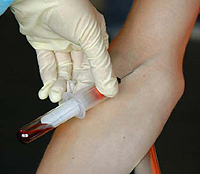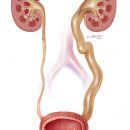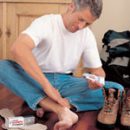What is the history of leprosy? How to diagnose, treatment and prevention of leprosy? Answers to these questions you will find in the article.
Content
From the history of ledge
Leprosy, or, scientifically, lepreing, was
Beach of mankind from ancient times.
Chinese treatises four thousand meselletes
Prescription, Egyptian papyrus written in
3.5 thousand. years to N.NS., Not to mention the creations
Plutarch, Galen and other greek-roman scientists
period, quite detail describe the clinic
leprosy, and to the description of this disease,
Made by Avichene in his Epochal Labor
«Canon Medicine», Modern doctor at all
Add nothing.
With the word «leprosy» Many people,
Thanks to historical films and books,
Arises before the eyes of the figure of the figure, cooked
in Balahon, hiding numerous ulcers and
flesh, rotten alive. At the same time the figure is continuous
calls into the bell, notifying all
others about their ominous approximation.
Crusades and numerous
Middle Ages' feudal wars contributed
Wide dissemination of this disease in Europe.
People were afraid of her much more than we were today
Fraging AIDS or cancer, and the leisure
considered cursed.

Everything was powerless against leprosy
Famous funds: neither diet did not help
Purification of the stomach or even considered the most
Effective drug infusion Meat Vijuki.
The sick was considered practically doomed. At
The appearance of the first signs of man ledging
fought in the church as if he was already dead,
after which he was given special clothes, as well as horn,
rattle or bell so he can
warn healthy people about your
approximation.
Patients with leprosy lost all
social rights, including inheritance rights.
Lrap from one of the spouses was considered legal
reason for divorce even from Catholics, church
marriages who did not terminate at all. BUT
Muslims repeated the words of the prophet Magomet:
«Run from lepers like a lion» (in India,
For example, practiced the custom - to feed
led lions).
Lepers forbidden to enter
Church or tavern, visit markets and fairs,
wash in running water or drink it, eat together
with healthy people, touch someone else's things
or to the goods when buying them, talk to people,
If the wind blows in their direction. If the patient
performed all these rules, he was provided
«freedom».
There were special institutions where
contained patients with leprosy - leprosaria.
The first leprosarium is known in Western Europe with
570 g. During the crusades, their number is sharply
Increased. Only in Central Europe to
1250 g. They have already numbered 19 thousand. Most often
They were placed on the outskirts of the city or for the city
feature to reduce the contacts of the lepers with
Citizens.
Medieval leprosarium is
medical institution where patients with lopera were
Granted themselves. They are under the fear
the death penalty could not leave it without
Special permission. To exit out
Leprosoria patients were supposed to wear their own
«Special custamians» And be sure to notify about your
approximation with sounds so that healthy can leave
expensive.
Ancient and medieval doctors are not
doubted that leprosy - contagious
disease. While the plague and black,
The devastating cities of Europe, appeared only
occasionally, and then disappeared, leprosy in the Middle Ages
existed constantly, hitting millions of people.
Huge fear of her justified cruel
Measures on the isolation of lepers. Thanks to this, and
Also due to improvement
sanitary and hygienic setting number
Patients with leprosy in Europe, starting with the first
Half XIV B., It began to gradually decrease.
In modern city you are unlikely
Hear the sinister bell sounds,
forced people before people run without
Looks away from «Unclean», and man,
«Gnumbering alcohol», It is also unlikely to meet
your way, even if you travel by
«Dangerous regions».
Diagnosis, treatment and prevention of leprosy
Establishing diagnosis «leprosy» - very
responsible business, t.To. entails a number
irreversible consequences for the patient and its
families. «There is one diagnosis that can not
put if there is no absolute confidence in his
Reliability is a diagnosis of leprosy»
(«Leprosy fighting guide», WHO, 1982.).
In typical cases, make a diagnosis
possible by clinical signs of the disease,
The main of which remain specific
Skin lesions. But it is necessary
confirm with bacterioscopic and
Histological studies.
With bacterioscopic examination
under the microscope consider washes with
mucous membrane of the nose, as well as zinc with
Affected skin sections. They are painted by special
in the detection of acid resistant
bacteria and observe clusters M.Leprae. For
Histological research take biopsy (material)
affected fabrics and try to detect
Characteristic changes (tubercles).
Now there are more or less
Effective preparations for the treatment of leprosy, however
And now the therapy occasionals a lot of time
And requires patience. Depending on the type
Diseases, man is treated either in leprosaria,
either at the place of residence (if skin manifestations
small and pathogen in bacterioscopy not
detected). Cultural treatment combining
Specific funds with stuffing and
Stimulating.
First include basic
Anti-collecting drugs (diaphenylsulfone,
Solusulfon, Diucifon and Other Derivatives
sulfonic series), as well as rifampicin, lamp,
Protonide, etionide. To the second - Gamma Globulin,
Pirogenal, methyluracyl, vitamin drugs,
Immunomodulators and T.NS.
 Treatment is carried out by courses
Treatment is carried out by courses
up to 6 months. At intervals
1 month. The effectiveness of treatment is estimated by
Results of bacterioscopic control and
Histological research.
The duration of treatment on average
now reduced to 3-3.5 years. There is a rule:
After the elimination of visible manifestations of the disease and
Disappearance of Hansen sticks from fabrics in the foci
lesions and in washes of nasal mucosa
shell patients can be discharged on
Outpatient truth. It must
continue with tuberculoid lepreing yet
1.5 years, with undifferentiated lepreing -
3 years, with lepromatous and dimorphic
lepring whole 10 years!
Prevention of leprosy, like
Prevention of any other infection includes
Individual and collective (social)
Events. Social measures warning -
raising the living standards of the population, from
which directly depends on the level of natural
immunity; Early detection, isolation and treatment
patients; Observation and survey of contact
persons (once a year for at least 7 years). Members
Family of patients with leprosy and persons who were with them
in long-term contact, not subject to call
army.
Personal Prevention - Careful
Compliance with personal hygiene rules! As if
Banal it sounded, but purity and soap -
The main enemies of leprosy (these are the words of Hansen himself).
All contact persons are prescribed warning
Chemotherapy Sulfonami.
There were reports of creating a vaccine
against lepros, and this is a serious premise for
Liquidation of the disease. However, too little
data on its effectiveness.
Despite positive shifts in
Treatment, people continue to infect and long
cheer and the number of such patients is still very
Great.
Unfortunately, the regions of the greatest
distribution leprosy include very
numerous population and if not
developed effective preventive measures, then
The situation with Leproi can still get out of
Control. Sulfone preparations support
human immunity, configuring him to fight
leprosy, but do not interfere with infection, but bad
household conditions, crowded population, bad
Sanitary and epidemic situation little
contribute to (more correctly, not at all
promote) recovery if the infection is already
happened.
World Organization
Health recently announced «Cross
hike» against leprosy
destroy this ancient disease on earth, and in
For the next years. To do this, we must reveal
cure about 2.5 million patients with leprosy.
Swiss pharmaceutical company «Novartis»
donated for these purpose drugs worth
30 million dollars, Japanese charity
Medical Fund - in the amount of 24 million, and also
20 million will come from the International Federation
National Protection Associations. Not
the fact that we will be able to win the leper, but the idea without
Doubts, good.









